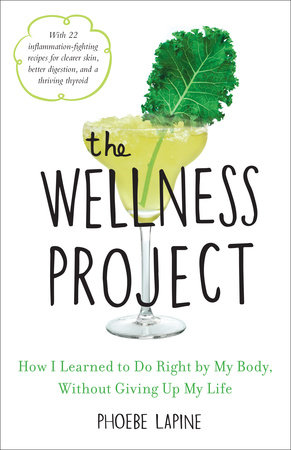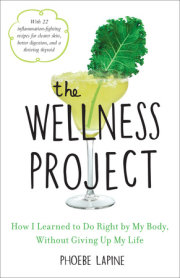If you could tell someone to make just one
lifestyle change that would have a profound effect on their general well-being, what would it be? The answers I got to my One Big Question (henceforth referred to as the OBQ) were surprising. People stopped talking about SoulCycle and superfoods and started talking about the bigger picture.
With these responses, I started designing a set of short-term challenges to help me tackle each of my problem areas, one by one. The idea was to dedicate a year to overhauling my health—like Gretchen Rubin did for her happiness—with experiments for everything from cleaning up my makeup to forming better hydration habits to feeding my microbiome.
And thus
The Wellness Project was born.
When I started talking about my project with friends and the readers of my blog,
Feed Me Phoebe, it became clear that “wellness” was a rather polarizing term. While many said that they embraced it, others reported that they felt the word was elitist and had come to stand for hundred-dollar‑a‑day juice cleanses and designer yoga mats instead of integrative health.
I needed to settle on a definition outside the modern marketing machine, and the one that spoke to me most was from the National Wellness Institute. It states that wellness is “an active process of becoming aware of and making choices toward a more successful existence.”
I liked this idea of an
active process—that wellness itself was a journey, not a destination. Because what I’d found that so many health experts, and even my own physicians, fail to acknowledge is that change is pretty fucking hard.
The struggle is
real.
Ninety-two percent of people who set New Year’s resolutions in 2014 failed to keep them. Why? One reason might be because the objectives were too ambitious. With so many new rules added to the mix every year—usually, the villainizing of one ingredient or another—it’s all too easy to throw fifteen balls (or organic apples) in the air and watch them come crashing down.
Working as a culinary instructor had shown me firsthand the failures that can result in the kitchen when you bite off more than you can chew, and tackling these “life recipes” would be no different. I had already struggled to implement the far-reaching advice that my doctor had handed to me without a road map. The grander my intentions, the more I would need a framework for execution.
And without one, the more likely I would be to end up with organic applesauce all over the floor.
The American Psychological Association recommends that you approach lifestyle changes in baby steps, one habit at a time. So for my wellness curriculum, I decided to compartmentalize my endeavors as much as I could. Like the 92 percent of well-meaning Americans, I had already
tried to do too much at one time and felt like a failure when overwhelm set in and, instead, I did nothing at all. Isolating each change would help me measure its true impact and see which ones were worth the time, money, and energy going forward.
I ruled out prohibitions that were too crazy or unrealistic. For example, I wasn’t going to throw out my entire wardrobe because the clothes contained toxic dyes. Everyone has a limit or an exemption clause, and I put my peep toe–heeled foot down at wearing a shapeless hemp tunic down Fifth Avenue.
To get the most difficult stuff out of the way, while my resolve was at its firmest, I would start by confronting my three biggest vices: sugar, caffeine, and alcohol. Since the state of my skin was one of my chief barometers for success, I would explore greener ways to care for it next. And because our food choices loom the largest, I knew I needed to figure out once and for all what rules should prevail in the kitchen.
Water, sleep, and exercise were basic imperatives that came up again and again in the answers to my OBQ, and they too would get a deeper dive. I blamed my failure on the fitness front on back pain and digestion problems, so I knew that I would have to tackle those two issues as well. And part of putting all the pieces of my wellness puzzle together would be to better understand how to support my hormones. Finally, since physical problems are often driven by emotional ones, I would have to get my stress in check. After all, one of my main motivations for taking on this project was that desperately trying to be “healthy” was causing me anxiety.
As for the new rules and routines I would live by, I gave myself the freedom to modify them as I figured out which experiments improved my life and which, despite the best scientific and spiritual intentions, just didn’t. I would certainly measure my progress by internal (blood work) and external (skin) evidence of change. But my intention was not to become the healthiest person on the planet. I wanted to discover a new path forward that I could stay on indefinitely, for the long haul.
Copyright © 2017 by Phoebe Lapine. All rights reserved. No part of this excerpt may be reproduced or reprinted without permission in writing from the publisher.








